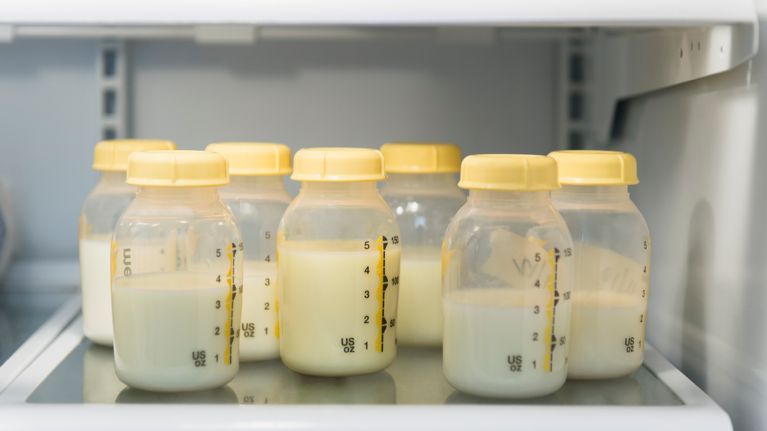Can Warmed Breast Milk be Refrigerated Again?

MonthiraYodtiwong / Getty Images
Breastfeeding is a labor of love that further bonds you and your new baby. If you choose to breastfeed, you already know that breast milk is a hot commodity in those early weeks, and wasting any part of it is a huge no-no. If you're pumping milk to store for later use, not even the best manual pumps or the best bottles for breastfed babies will do your milk justice if it's not kept at the correct temperatures. So what if your little one doesn't finish an already-warmed bottle of liquid gold? Don't stress—we've got it covered.
Can warmed breast milk be refrigerated again?
If you want to get the most out of that hard-earned breast milk, breast milk storage is extremely important. You don't want all that work to go to waste. So what should you do with leftover breast milk your sweet babe didn't finish?
"It can be refrigerated again but needs to be used within two hours due to potential bacteria growth," says Dr. Tamika K. Cross, MD, FACOG, and pH-D Feminine Health Advisor. "Refrigeration slows the bacterial growth process somewhat but not enough to prolong any more."
Is it safe to reuse breast milk?
It's tempting to take unused breast milk and toss it in the refrigerator or freezer, but that doesn't mean you should. Cross states that breast milk remains good to go if refrigerated — only if used within two hours. Any longer and you risk possible bacteria growth, which is bad news for you and your growing baby.
Is it safe to re-freeze breast milk after it has been warmed?
Cross says you shouldn't return thawed breast milk to the freezer if you've already heated it. Doing so changes the milk's profile, which can make your baby sick. To stay safe, store it in the refrigerator.
"Freezing and warming milk destroys some of the innate properties that help to avoid bacterial growth so it is altered after going through the warming or thawing process, which is why it cannot be refrozen," Cross adds.

FAQs
What is the shelf life of breast milk?
The CDC recommends that freshly expressed or pumped milk be stored at room temperature for up to four hours, in the refrigerator for up to four days, or in the freezer or deep freezer for about six months. Any longer than that, and it should be tossed out. And again, if you've already heated it, you have a two-hour window to refrigerate and reuse it.
What is the breakdown of nutrients when warmed and refrigerated again?
Breast milk is an ultra-nutrient-dense way to feed your baby. In the first few weeks after birth, the milk itself consists of protective antibodies, live cells, and good bacteria. By the time your baby is around four weeks and older, your breast milk has evolved into a protein-rich meal full of vitamins, minerals, hormones, and all the things your baby needs to ensure their growth and brain development.
While not everyone breastfeeds (for various personal reasons), we're all doing our best. That said, the bottom line is simple: if you've heated a breast milk bottle, the milk should return to the refrigerator and be consumed within two hours. As Cross says, repeated warming and cooling of breast milk should be avoided due to the possibility of contaminants from your baby's mouth, so don't do it.
What is the best way to reheat or thaw breast milk?
To thaw frozen breastmilk, the CDC recommends you put the frozen breast milk in the fridge overnight (which can take around 12 hours), store it in a bowl of warm water, or place it under lukewarm running water for a few minutes. Make sure to shake the bottle afterward if the milk has separated.
Leftover breastmilk should be heated by putting it under warm, running water. Don't heat breast milk in the microwave as the temperature could scald your baby's mouth. You can, however, place the bag or bottle in a pot of water on the stove and gently heat it to the proper temperature (up to 99 degrees Fahrenheit), or utilize a bottle warmer. Whichever method you choose, always test the temperature on your wrist before feeding your baby.
We get it—being a mom is hard. How you store breast milk shouldn't be. Keep in mind the above guidelines and enjoy those precious moments with your baby while you can.
Weekly Newsletter
Keep up with your baby's development, get the latest parenting content and receive special offers from our partners